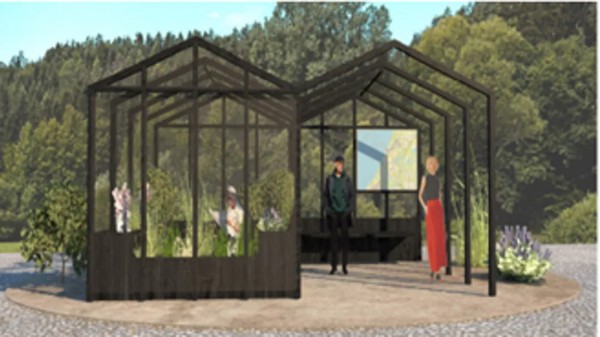Circular projects kick off with LIFE grant
Arriva Netherlands will realize four circular projects on bus line 90 with the help of the LIFE grant from the European Commission's Programme for the Environment and Climate Action. Line 90 is Arriva's Green Line, between Lisse and Leiden.
Together with our partners e2H2, Autotrans and OFN we will, over a period of three years, incorporate circularity into the capillaries of this green route. What will we accomplish with the help of the LIFE grant?
From electric buses to bus stops made of oyster shells

From diesel to electric
Two 10-year-old diesel Volvo buses are being converted to electric buses. The result: no more exhaust fumes, a reduction in CO2 emissions, quieter transport and an extension of the economic life of the buses by 3 to 8 years.
Collection of micro rubber from tires
Devices are placed near the rear tires of two buses that catch rubber particles. These microparticles are released as a result of the tire wear process. The rubber is collected and reused in recycled products. Such as new tires.
Circular seat covers
From residual waste, such as clothing and old fishing nets, circular upholstery is made for the passenger seats. In addition, the seats are made from as few loose components as possible to extend their lifespan.
Circular bus stops, unlike anything else
Three circular and eye-catching bus stops are being installed in Lisse, Noordwijk and Katwijk. The bus stops result from a collaboration with the Royal Academy of Art The Hague
Bus stop the Greenhouse in Lisse

This future bus stop, located on the route to the Keukenhof, consists of two areas. A more traditional waiting area and a conservatory. In the conservatory, travelers can wait for the bus among flowers and herbs. The plants smell pleasant, filter the air and act as natural insulators, dampening the sounds of the road. The stop is made of resysta beams (rice husks) and tempered glass, also called safety glass, among other materials.
Bus stop the Seagull in Katwijk

For the bus stop in Katwijk, a design was created that connects to lighthouse the Vuurbaak and the beach. For the seagull, the beach is a place to take a break and then travel on. The same applies to bus stop the Seagull. The main structure of the stop is made of resysta beams and tempered glass, among other things. The sidewalk tiles incorporate half-ground oyster shells from the local fishing industry.
Bus stop in Noordwijk

Noordwijk is characterized by long beaches and dunes. To connect with nature, the choice was made to make a stop out of natural colors and materials such as cardboard tubes connected by Accoya wood. This modified wood has a lifespan of at least 60 years and is fully recyclable.
About the LIFE Program
LIFE is a European grant program that contributes to the realization of European environmental, energy and climate policies. LIFE gives grants to projects that further develop or implement European policy in one of the following themes: Nature & Biodiversity, Circular Economy & Quality of Life, Climate Mitigation & Adaptation and Renewable Energy Transition. Read more about the LIFE program.
